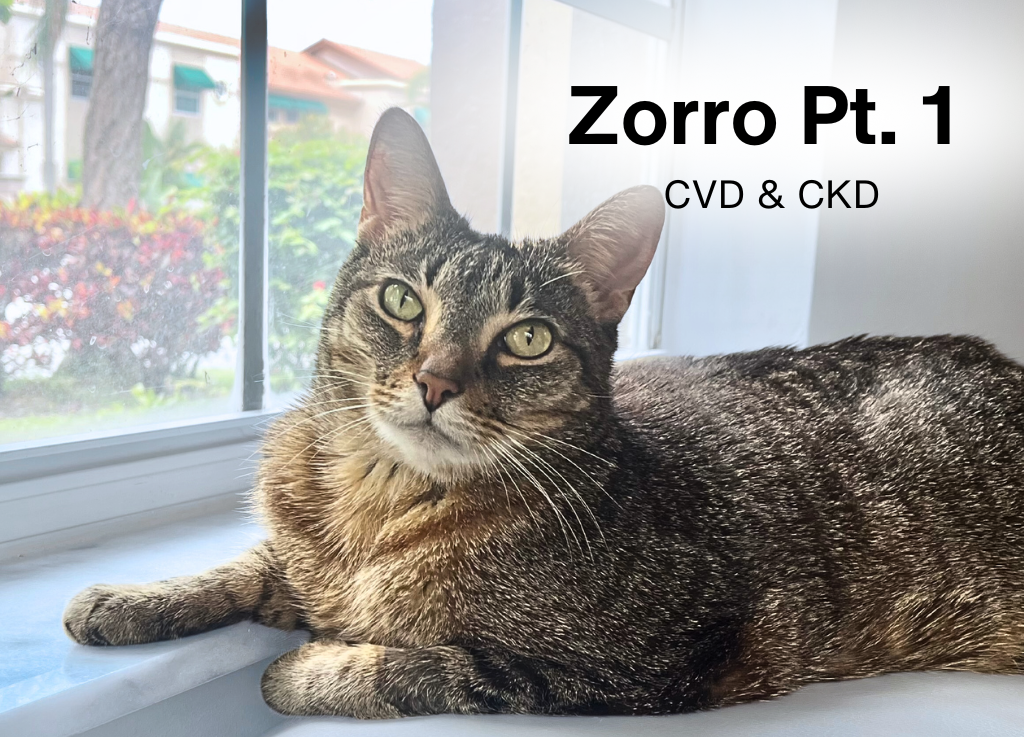Part I: Initial Presentation and Bloom Intervention
Initial Presentation
This case study presents the clinical course of Zorro, a 6.5-year-old neutered male Domestic Shorthair (DSH) cat diagnosed with cardiovascular disease (CVD), most consistent with dilated cardiomyopathy (DCM). On June 3, 2025, Zorro presented to Coral Springs Animal Hospital (FL) for acute respiratory distress and was placed in an oxygen chamber for 24 hours. Follow-up with a board-certified cardiologist at Sawgrass Veterinary Cardiology confirmed DCM. Subsequent visits to his primary veterinarian (Vetco Total Care #2549) on June 26 and again on July 3 revealed signs of acute kidney injury (AKI), with severe proteinuria (UPC 4.0), brownish urine, and hypokalemia (serum potassium 3.1 mEq/L). These abnormalities were likely iatrogenic—secondary to the diuretic-based cardiac treatment.
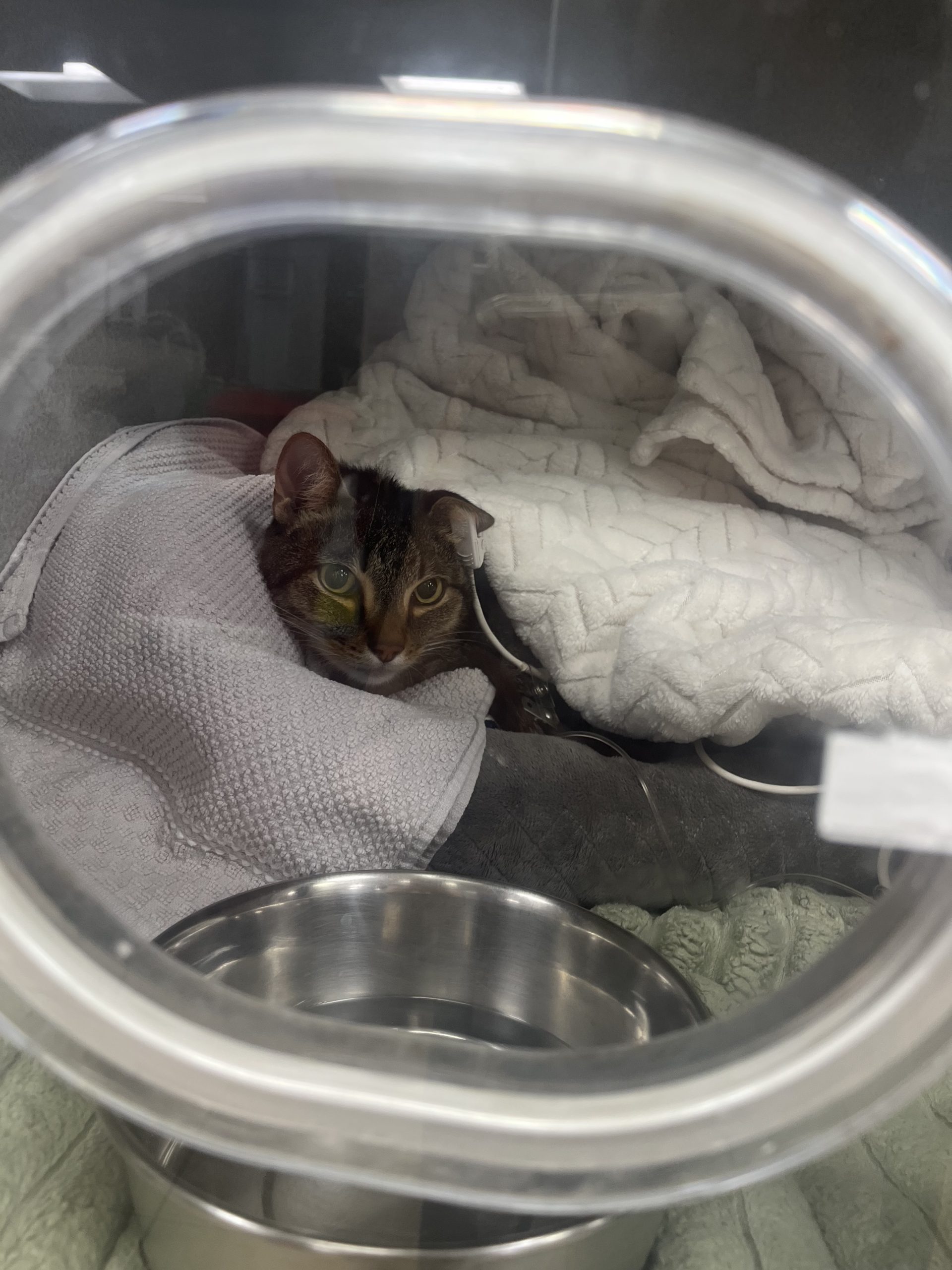
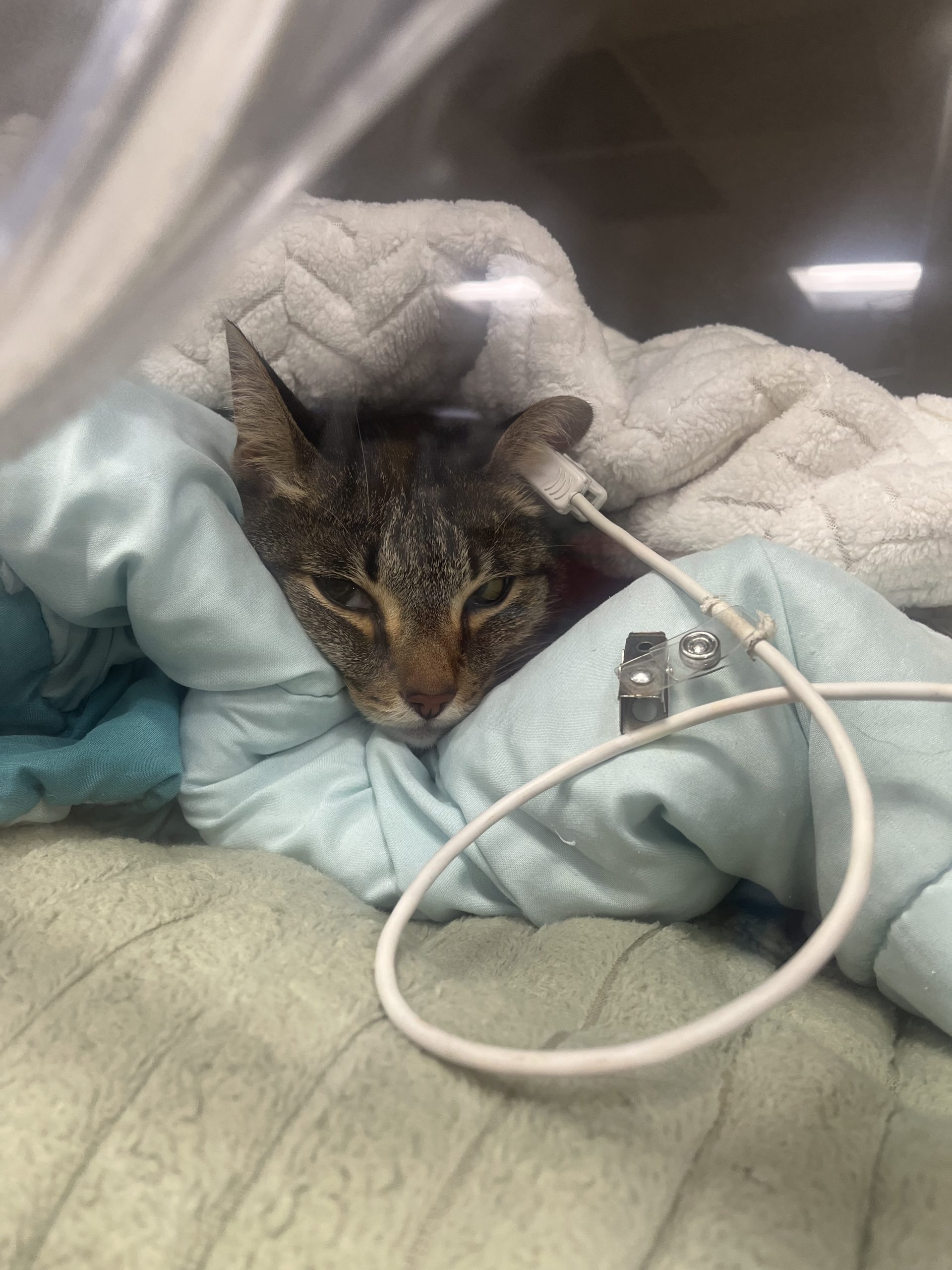
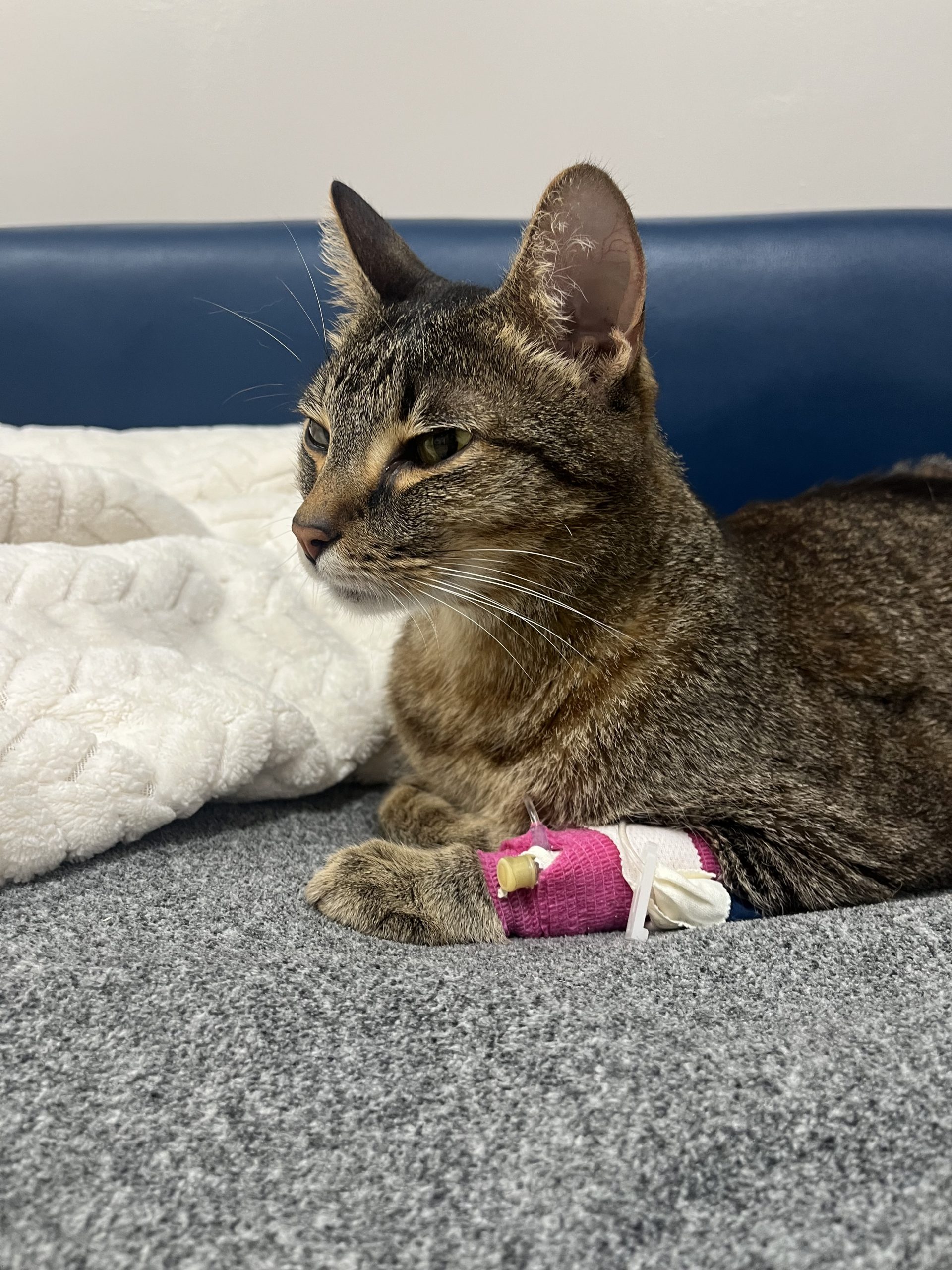 Zorro – June 3, 2025 48-hours in ER (24-hours in oxygen chamber)
Zorro – June 3, 2025 48-hours in ER (24-hours in oxygen chamber)
Bloom Bioscience Intervention (Initiated July 3, 2025)
Following the veterinarian’s recommendation for emergency care, Zorro’s owner contacted Bloom Bioscience to explore alternative support options. Rather than pursue ER care, the owner initiated a Bloom-directed supplement protocol aimed at supporting hydration, vascular integrity, and renal recovery.
The targeted regimen included:
- Revitalize Hydration: Formulated to optimize cellular hydration, replenish electrolytes, support pH balance, and enhance zeta potential.
- Revitalize Health & Immunity: A broad-spectrum support blend including MSM, NAC, N-acetyl glucosamine (NAG), spirulina, resveratrol, hyaluronic acid, and quercetin.
- Rutin Cat (optional): A flavonoid-based vascular support agent.
The focus was to reduce/eliminate proteinuria, stabilize renal function, enhance vascular integrity, and correct electrolyte imbalances. Revitalize Hydration’s citrate and taurine components support vascular elasticity, modulate calcium-phosphate homeostasis, and contribute to myocardial protection.
Zorro’s pharmaceutical regimen was discontinued on July 4, and he transitioned fully to Bloom’s protocol by July 5. Clinical signs improved rapidly, with the owner documenting clearer, yellow urine and increased activity within days.
Outcomes by July 15
- Proteinuria resolved (UPC dropped from 4.0 → 0.1)
- Potassium normalized (3.1 → 4.6 mEq/L)
- Total T4 increased (2.0 → 3.1 µg/dL), possibly reflecting recovery of thyroxine-binding globulin (TBG)
The significant rise in T4 may be attributed to restored protein retention rather than true thyroid dysfunction.
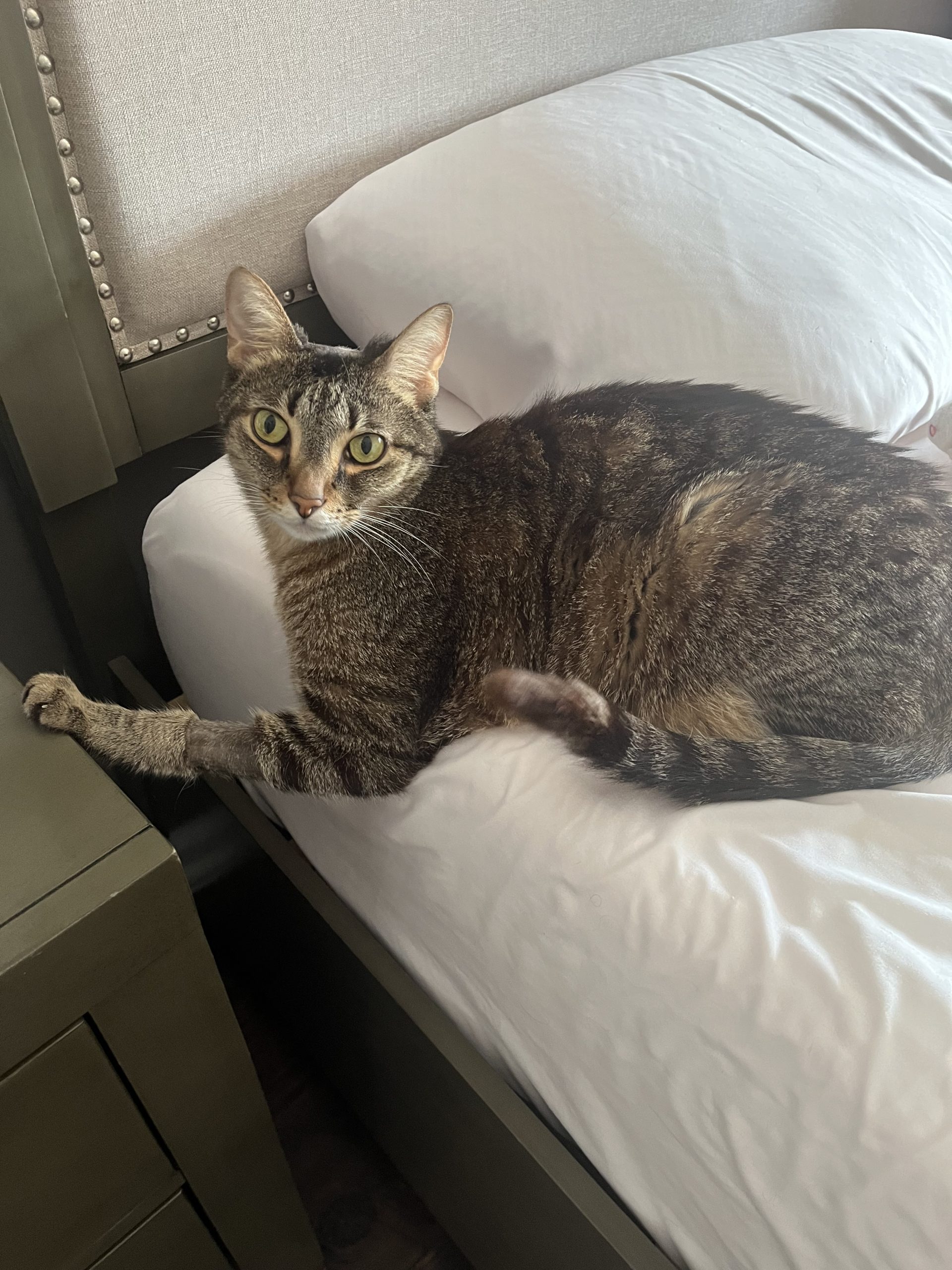 Zorro – July 10, 2025 (7-days on Bloom): Brightness in his eyes comes back
Zorro – July 10, 2025 (7-days on Bloom): Brightness in his eyes comes back
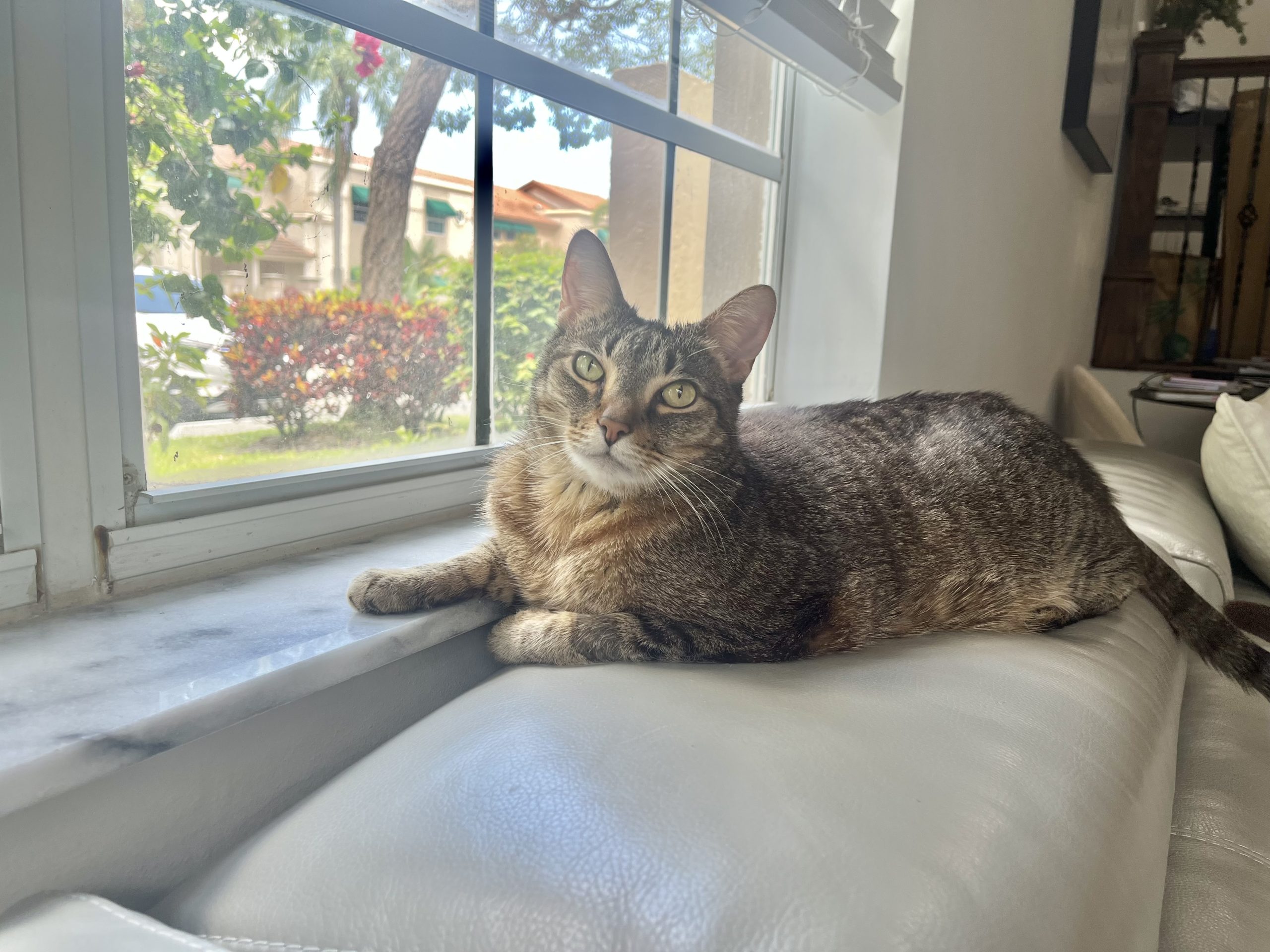 Zorro – July 27, 2025 (24-days on Bloom): Back to normal weight and energy levels, gets the “zooomies”.
Zorro – July 27, 2025 (24-days on Bloom): Back to normal weight and energy levels, gets the “zooomies”.
Medical Background
Zorro had a documented history of trace proteinuria since 2023, suggesting early glomerular compromise. In 2024, intermittent hypertension, urine pH swings (6.0–8.5), and hypokalemia were recorded, reflecting early systemic dysregulation. Muscle twitching observed in August 2024 was likely a sign of progressive potassium depletion.
Bloom Bioscience recommends proactive hydration support in similar patients, as even mild proteinuria can precede more serious renal compromise.
Background Concepts
Acute Kidney Injury (AKI)
AKI in cats is a sudden decline in renal filtration, often reversible if identified early. Zorro’s AKI was likely secondary to intravascular dehydration from loop diuretic use (furosemide), compounded by cardiac disease.
Proteinuria
A UPC > 0.2 in cats indicates protein loss through glomeruli. A UPC of 4.0 reflects marked glomerular injury. Loss of carrier proteins such as albumin and TBG can alter systemic hormone and fluid balance.
Zeta Potential and Filtration Barrier Integrity
Zeta potential is the negative electrical charge at the blood-colloid interface. This electrostatic repulsion between molecules prevents protein aggregation and filtration through glomeruli. Hydration and ionic balance (pH 7.35–7.45) are critical to maintaining optimal zeta potential. Dehydration and electrolyte shifts lower zeta potential, impairing vascular function and filtration.
Oncotic Pressure and Edema
Mechanism: Albumin maintains oncotic pressure to keep fluid in vessels. Protein loss lowers oncotic pressure, increasing the risk of edema.
Bloom’s Approach: Rather than relying on diuretics, Bloom focused on preserving albumin via glomerular support, restoring fluid homeostasis from within.
Cardiovascular Disease and AKI
Cats with CVD are prone to fluid buildup. Furosemide, commonly used for pulmonary edema, can cause dehydration and AKI. Zorro’s case exemplifies this delicate balance.
Case Timeline and Laboratory Data
| Parameter | June 13, 2025 | July 3, 2025 | July 15, 2025 | Reference Range |
| Total T4 (µg/dL) | Not available | 2.0 | 3.1 | 0.8–4.7 |
| Urine Protein (mg/dL) | 45.7 | 91.3 | 7.1 | <30 |
| UPC | 0.2 | 4.0 | 0.1 | <0.2 |
| Potassium (mEq/L) | Not available | 3.1 | 4.6 | 3.5–5.5 |
| Sodium (mEq/L) | Not available | 163 | 155 | 145–155 |
| ALT (U/L) | Not available | 271 | 44 | 10–100 |
| BUN (mg/dL) | Not available | 17 | 20 | 15–34 |
Medications Before Bloom Protocol
As of June 27:
- Furosemide (5 mL BID)
- Potassium supplement (BID)
- Pimobendan (Vetmedin) – Positive inotrope
- Clopidogrel (Plavix) – Antiplatelet
- Spironolactone – Potassium-sparing diuretic
Supplements:
- DL-Methionine – Urinary acidifier
- Vyralis – Immune support
- Standard Process Cardio GF – Cardiac supplement
Post-Bloom: All medications and supplements were discontinued except:
- Revitalize Hydration
- Revitalize Health & Immunity
- Optional: Rutin
- Optional: Cardio GF (no adverse effects reported)
Hypothesis
Zorro’s AKI and proteinuria were likely induced or exacerbated by cardiac medications—especially furosemide. Revitalize Hydration corrected electrolyte imbalances, enhanced zeta potential, and supported vascular and renal function. This led to:
- Resolution of proteinuria (UPC 4.0 → 0.1)
- Restoration of potassium (3.1 → 4.6 mEq/L)
- Rebound of Total T4 (2.0 → 3.1 µg/dL)
Revitalize Hydration was the principal agent in immediate renal recovery, while Revitalize Health & Immunity supported immune and vascular healing.
Supporting Literature & Biochemical Basis
- Zeta Potential: Elevated zeta potential prevents protein leakage at the glomerulus by maintaining charge repulsion.
- Hydration & Ionic Support: Corrects pH, improves blood rheology, and stabilizes membrane potential.
- T4 Recovery: Linked to restored TBG retention; similar mechanisms observed in nephrotic humans.
- Albumin Conservation: Helps preserve oncotic pressure and reduce edema.
Clinical Insights
Zorro’s improvement underscores the potential of nutraceutical interventions in early AKI (with or without concurrent CVD). Avoiding diuretics while supporting the vascular matrix nutritionally enabled rapid reversal of renal damage. His non-azotemic status facilitated favorable outcomes.
By July 20 the owner reported more than a 90 percent reduction in Zorro’s chronic persistent itching, a secondary symptom that resolved as homeostasis improved. This outcome reflects the broader correction of internal dysfunction driven by immune and vascular support. Healing occurs from within at the vascular level not through external or topical treatments.
Azotemia Note
Zorro was non-azotemic (normal BUN), supporting the diagnosis of early-stage AKI. Bloom Bioscience research indicates that non-azotemic patients respond more rapidly to zeta potential–enhancing protocols.
Evaluation
- Strengths: Strong correlation between supplement introduction and clinical improvement.
- Limitations: Lack of independent, peer-reviewed trials on Revitalize Hydration; internal data provide supportive trends.
- T4 Variables: Effects of iodine and spirulina were considered negligible; lab error unlikely based on trend consistency.
Conclusion
Zorro’s AKI, possibly driven by CVD medication side effects, responded rapidly to Bloom’s Revitalize Hydration. Proteinuria resolved, potassium normalized, and thyroid hormone levels improved, without diuretics. While Revitalize Health & Immunity supported overall wellness (and is essential to heal/nourish the vascular lining to prevent recurrence), Revitalize Hydration was key. Continued monitoring is warranted due to his underlying heart disease and the fluid in and around his lungs. It is our goal for this fluid (edema) to reabsorb into the vascular system as Zorro’s health returns to homeostasis.
References
- Bloom Bioscience – Revitalize Blends for Immunity (https://bloombioscience.com/research/)
- Bloom Bioscience – Revitalize Your Pet’s Health and Hydration (https://bloombioscience.com/research/)
- Bloom Bioscience – CKD Meets CVD: The Hidden Threat to Feline Health and the Simple Supplement That Helps (https://bloombioscience.com/ckd-meets-cvd-the-hidden-threat-to-feline-health-and-the-simple-supplement-that-helps/)
- Kjeldsen K. Hypokalemia and Sudden Cardiac Death. Exp Clin Cardiol. 2010 Winter;15(4):e96-9. PMID: 21264075; PMCID: PMC3016067. https://pmc.ncbi.nlm.nih.gov/articles/PMC3016067/
- Bloom Bioscience – Part 3: Understanding and Managing Feline Chronic Kidney Disease (https://bloombioscience.com/part-3-understanding-and-managing-feline-chronic-kidney-disease/)
- Scientific Reports – Hypothyroidism and Proteinuria in Humans (https://www.nature.com/articles/s41598-022-19226-0)
- Journal of Feline Medicine and Surgery – Effects of Hyperthyroidism on Kidney Function (https://pmc.ncbi.nlm.nih.gov/articles/PMC11149009/)
- Cornell University – Hyperthyroidism in Cats (https://www.vet.cornell.edu/departments-centers-and-institutes/cornell-feline-health-center/health-information/feline-health-topics/hyperthyroidism-cats)
- Zeta Biolongevity, Inc. – Compositions and Methods for Treating and Preventing Proteinuria
